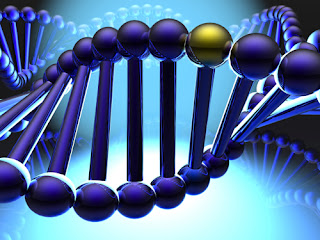Take Control of your DNA
Defective Genes "Cause" Less Than 1% Of All Disease
by Sayer Ji
In the mainstream media (and the popular consciousness programmed to consume it) defective genes are spoken about as if they were "disease time bombs," fatalistically programmed to go off inside of us, thanks to flawed genetic contributions of our ancestors. And yet, despite common misconceptions, monogenic diseases, or diseases that result from errors in the nucleotide sequence of a single gene are exceedingly rare. In fact, less than 1% of all diseases fall within this category...
Following the completion of the Human Genome Project (HGP) in 2003 it is no longer accurate to say that our genes “cause” disease, any more than it is accurate to say that DNA is sufficient to account for all the proteins in our body. Despite initial expectations, the HGP revealed that there are only 20,000-25,000 genes in human DNA (genome), rather than the 100,000 + believed necessary to encode the 100,000 + proteins found in the human body (proteome). Did you follow that?
There are not even enough genes in the human body to account for the existence of the basic protein building blocks that make it possible, much less explain the behavior of these proteins in health and disease states!
The “blueprint” model of genetics: one gene → one protein → one cellular behavior, which was once the holy grail of biology, has now been supplanted by a model of the cell where epigenetic factors (literally: “beyond the control of the gene”) are primary in determining how DNA will be interpreted, translated and expressed. A single gene can be used by the cell to express a multitude of proteins and it is not the DNA itself that determines how or what genes will be expressed. Rather, we must look to the epigenetic factors to understand what makes a liver cell different from a skin cell or brain cell. All of these cells share the exact same 3 billion base pairs that make up our genetic code, but it is the epigenetic factors, e.g. regulatory proteins and post-translational modifications, that make the determination as to which genes to turn on and which to silence, resulting in each cell’s unique phenotype.
Moreover, epigenetic factors are directly and indirectly influenced by the presence or absence of key nutrients in the diet, as well as exposures to chemicals, pathogens and other environmental influences. Thoughts and emotions also play a role in how these epigenetic factors are articulated, indicating that the flow of genetic information, once thought to be strictly vertical (passage of genetic information from one cell or individual organism to its progeny by conventional heredity mechanisms), also flows horizontally and bi-directionally, opening the door back up for the human soul to return to biological science, having been reduced to a mere "ghost in the machine," since René Descartes (1596-1650), the French philosopher and mathematician, split body and soul asunder, almost five centuries ago.
In a nutshell, what we eat and what we are exposed to in our environment directly affects our DNA and its expression.
Within the scope of this new perspective even classical monogenic diseases like Cystic Fibrosis (CF) can be viewed in a new, more promising light. In CF many of the adverse changes that result from the defective expression of the Cystic Fibrosis Transmembrane Conductance Regulator (CFTR) gene may be preventable or reversible, owing to the fact that the misfolding of the CFTR gene product has been shown to undergo partial or full correction (in the rodent model) when exposed to phytochemicals found in turmeric, cayenne, and soybean Moreover, nutritional deficiencies of seleniun, zinc, riboflavin, vitamin e, etc. in the womb or early in life, may “trigger” the faulty expression or folding patterns of the CFTR gene in Cystic Fibrosis which might otherwise have avoided epigenetic activation. This would explain why it is possible to live into one’s late seventies with this condition, as was the case for Katherine Shores (1925-2004). The implications of these findings are rather extraordinary: epigenetic and not genetic factors are primary in determining disease outcome. Even if we exclude the possibility of reversing certain monogenic diseases, the basic lesson from the post-Genomic era is that we can’t blame our DNA for causing disease. Rather, it may have more to do with what we choose to expose our DNA to, and even more surprisingly: how we choose to think and feel about our embodiment.

